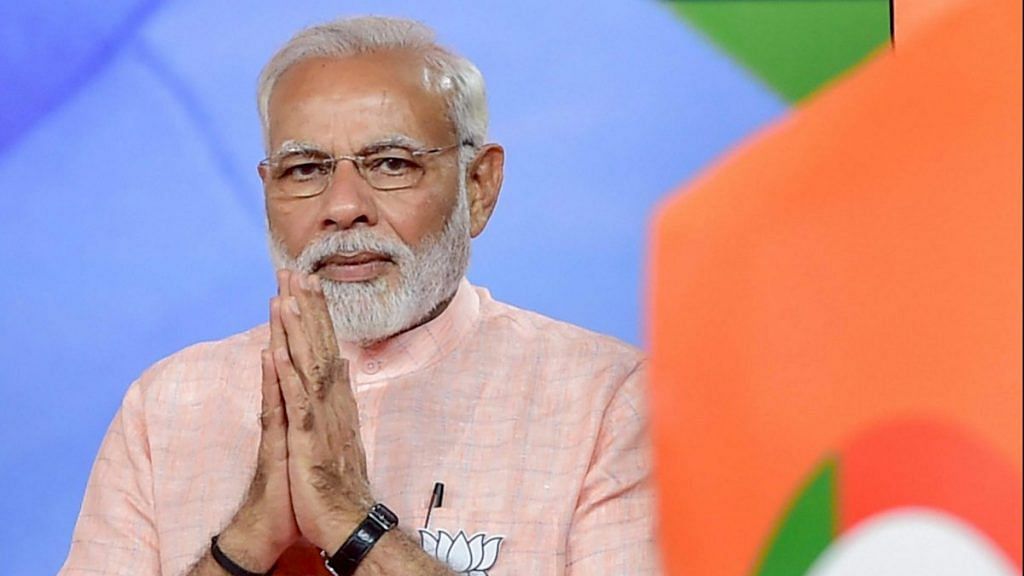Commentators may have missed that the Indian state is less equipped now to provide the resources and political direction necessary to effectively support industrial development.
Narendra Modi’s election, now four years ago, brought tremendous optimism to many observers of the Indian economy. Finally, it was assumed that the man who supposedly had achieved economic miracles in Gujarat would govern India with similar discipline, encouraging investment and thus unleashing the full potential of the market to drive India’s economic transformation.
Four years later, however, Modi’s project of governance reform has stalled. Many of the most vivid reformist policies – demonetisation and the introduction of a sweeping new sales tax – have been more symbolic, and even potentially counterproductive, than substantive.
Despite Modi’s earned reputation as a committed public servant and despite strong legislative majorities, there is little evidence that the Indian government is becoming more effective in governing the economy under his leadership. As The Economist has noted, Modi has turned out to be “less a reformer as a nationalist firebrand”. The BJP’s ongoing electoral mobilisation has increasingly emphasised ethnic nationalist appeals over promises of economic transformation.
Modi’s inability to reform and thus transform the Indian economy is, however, not a personal failing. Rather, it is the consequence of larger structural changes in the ways that the Indian state engages with the economy, ones that are embedded in the nature of liberalisation in the 1990s. To understand the nature of these changes and how they add up to the impossibility of transformation through institutional reform in contemporary India, we should re-evaluate economic governance during the Nehruvian era, when the state was much more powerfully interventionist.
State-directed development
At Independence in 1947, India was a poor and overwhelmingly agrarian society. Nationalist leaders recognised the need to implement policies to enable rapid industrial development, to shift capital and labour from low- to high-productivity economic activities. These policies led to what is known pejoratively in India as the “license-permit-quota raj”. For all the many ways that the Indian government restrained the market, there were quieter ways in which such state intervention enabled the growth of Indian industry, from ensuring industrial peace to protecting infant industries. Perhaps most importantly, state-sponsored development finance institutions directed long-term capital to industrial enterprises, both public and private, that could invest in long-term productive activities.
Some of the most storied multinationals in India today, from Tata Motors to Cipla, began with significant financial and institutional support from the Indian government. This support had concrete outcomes; it is rarely acknowledged that in the heyday of statist development, from the mid-1950s until the mid-1960s, annual industrial growth averaged 6.9 per cent.
The era of state-directed development in India was not without its problems. The Indian government’s efforts to transform its economy have not been as successful as countries in East Asia. And many of these statist institutions declined in the 1970s and 1980s in the face of higher energy costs, labour militancy and the political ascendance of groups – like farmers – unhappy with a focus on industry. During those decades, too, Indian politics fractured into a multi-party system, with many different constituencies demanding the resources that could previously be reserved for industrialisation.
After two decades of drift and stalled attempts of reforming a sclerotic system, many welcomed the liberalisation in 1991, which drew the state out of directing the economy. These reform policies coincided with an increase in economic growth, leading many to argue that the former caused the latter by unleashing capitalism’s “animal spirits”. Yet what commentators may have missed is that the state is much less equipped now to provide the resources and political direction necessary to effectively support industrial development. What remains is an Indian economy with great potential and many local successes, but no overall coordination over industrial policy.
Rent-seeking relationship
Modi was, in part, elected on the promise of correcting this absence. But the difficulty of institutional reform leading to transformative outcomes is that the government has fewer carrots and much fewer sticks to direct the economy’s efforts toward long-term production. Indian financial corporations, focusing on what will most reliably create the most stable returns, place their capital in utilities, consumer lending, or real estate.
India’s great industrial corporations have diversified from core manufacturing into groceries, banking, and technology services. Foreign direct investment, rather than using India as a base for manufacturing and innovation, views India as a growing market for middle-class consumer goods or as a source of mineral wealth.
More broadly, the relationship between government and business is bound up in rent-seeking, with particular politicians helping particular businesses by providing them with licenses or regulatory favours, often in exchange for campaign contributions or other gifts. The fact remains that while specific governments and its members can help specific businesses, there is little that government as a whole can do for industry as a whole. This modifies and extends political scientist Atul Kohli’s characterisation of the Indian state as “pro-business” rather than “pro-market”: the Indian state, or individual politicians, support some businesses, particularly in sectors thick with rents, but remain powerless to help high value-added manufacturing.
We make a huge mistake by focusing on the mantras of “reform”: that the right rules, properly implemented, will naturally unleash the potential of the Indian economy, and that the only problems of the economy are corruption and inefficiency.
Rather, the challenges of industrial development are issues of the distribution of resources, how to direct them, and who benefits – questions, in other words, of politics. These political questions are at once central to the politics of development and are often ignored in favour of “getting the institutions right.”
Adnan Naseemullah is Lecturer in International Relations at King’s College London, and the author of Development after Statism (Cambridge University Press, 2017). A version of this article first appeared in India in Transition, a publication of the Center for the Advanced Study of India, University of Pennsylvania.
